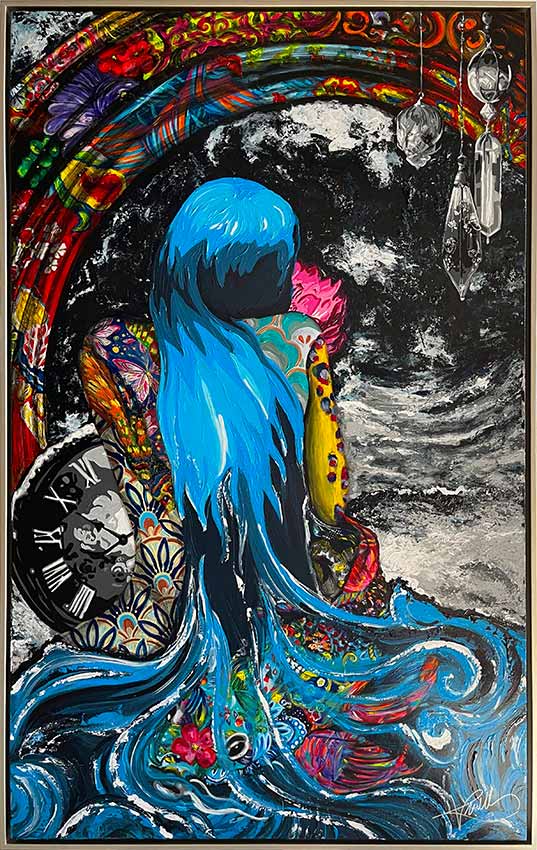In the vast and diverse realm of artistic expression, symbolism plays a pivotal role in conveying deeper meanings and evoking profound emotions. From the vibrant strokes of a painting to the intricate details of a sculpture, symbolism infuses art with layers of significance, inviting viewers to embark on a journey of interpretation and discovery. In this comprehensive exploration, we delve into the captivating world of symbolism in art, unraveling its rich tapestry of meanings and uncovering its universal significance.
Art and Symbolism: A Timeless Connection
At the heart of artistic creation lies the symbiotic relationship between form and meaning. Throughout history, artists have employed symbolism as a potent tool for imbuing their works with hidden levels of significance. From ancient cave paintings to contemporary masterpieces, the use of symbolism transcends time and culture, serving as a bridge between the tangible and the intangible realms of human experience.
Symbolism in Art: Decoding Visual Language
In the realm of art, symbolism manifests in various forms, ranging from colors and motifs to composition and subject matter. Each element carries its own symbolic weight, contributing to the overall narrative and emotional resonance of the artwork. Whether subtle or overt, symbolism invites viewers to engage with the artwork on a deeper level, deciphering its hidden meanings and unraveling its mysteries.
Color Symbolism: The Language of Hues
Color holds immense symbolic power in art, serving as a potent means of communication and expression. Across cultures and traditions, different colors carry distinct connotations and evoke specific emotions. For example, the vibrant red hues of passion and vitality, the tranquil blues of serenity and calmness, and the mysterious purples of royalty and spirituality. By harnessing the symbolic potential of color, artists infuse their works with layers of meaning and evoke visceral responses from viewers.
Hidden Layers: Exploring Subtext and Subtlety
In addition to overt symbols, many artworks contain hidden layers of symbolism that require careful observation and interpretation. These hidden elements may manifest as subtle visual cues, cryptic motifs, or nuanced compositional choices, inviting viewers to engage in a process of discovery and unraveling. Through the exploration of hidden tiers, viewers gain insight into the artist’s intentions and unlock new dimensions of meaning within the artwork.
Cultural Context: Shaping Symbolic Interpretation
The interpretation of symbols in art is deeply influenced by cultural context, societal norms, and historical background. What holds symbolic significance in one culture may carry entirely different meanings in another. Therefore, understanding the cultural background surrounding an artwork is essential for decoding its symbolism and grasping its intended message. By examining the cultural milieu in which an artwork was created, viewers gain valuable insights into its symbolic language and significance.
Universal Symbols: Bridging Divides and Connecting Humanity
Despite cultural differences, certain symbols possess global significance, transcending geographical boundaries and linguistic barriers. These universal symbols tap into shared human experiences and emotions, forging connections across diverse cultures and fostering a sense of commonality and understanding. From the timeless symbolism of the circle representing unity and wholeness to the eternal symbol of the tree symbolizing growth and renewal, global symbols serve as powerful conduits for communication and communion.
Universal Significance: The Impact of Symbolism on Society
Beyond their aesthetic appeal, artworks imbued with symbolism have the power to shape perceptions, provoke thought, and catalyze social change. By harnessing the universal language of symbolism, artists can address complex issues, challenge prevailing narratives, and inspire collective action. Whether confronting issues of social justice, environmental sustainability, or personal identity, symbolic art has the capacity to resonate deeply with viewers and spark meaningful dialogue.
In conclusion, allegory in art is a multifaceted phenomenon that enriches our understanding of the world and deepens our appreciation for the complexities of human experience. By decoding the symbolic language of art, we gain insight into the minds of artists, connect with our shared humanity, and embark on a journey of exploration and enlightenment. As we continue to unravel the mysteries of symbolism, let us celebrate the profound impact of art in all its symbolic glory.
Shop my artwork collection.
Check my digital artwork collection.


